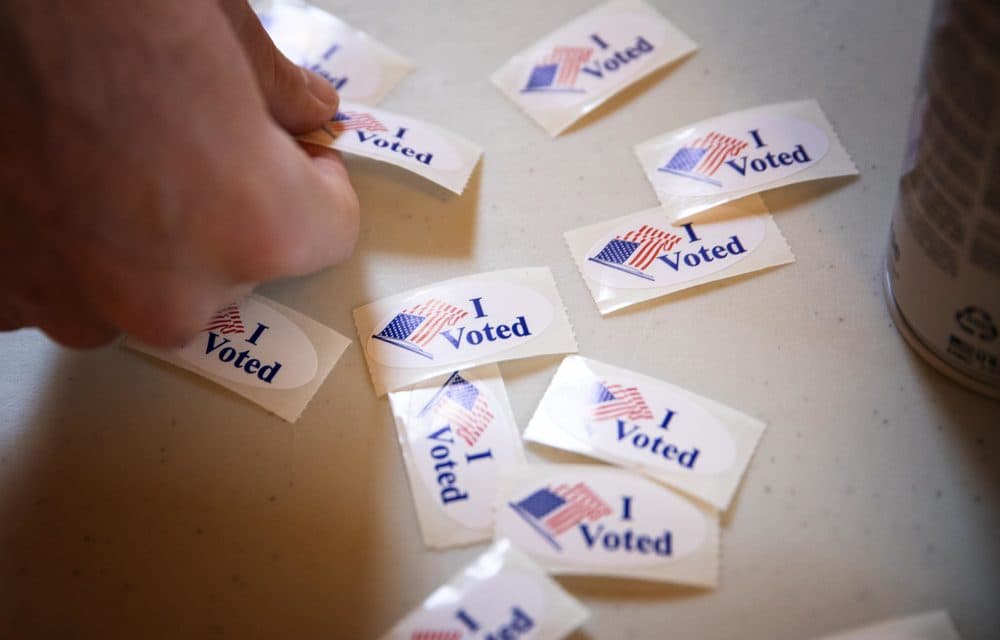Advertisement
'Live Podcasts,' And Other Election 2020 Audio Experiments

The pandemic might have robbed journalists of free newsroom pizza this election night, but it failed to stifle their innovation and creativity.
Elections often bring out the best in news organizations — and offer a unique proving ground for new ideas. This year was no different, coronavirus notwithstanding. At the same time, audience engagement was at an all-time high, with people yearning for information on seemingly every platform. (NPR for instance saw its largest digital audience ever last week.)
We at Project CITRUS were paying particularly close attention to some of the experimental work being done in the on-demand audio space (as we do) around the election. Here are a few projects that caught our attention.
Keep Them Podcasts Rollin'
For most news outlets that regularly produce on-demand audio, the election meant a more frequent and more rapid publishing cadence. Daily news podcasts that post a daily episode instead posted twice or thrice daily — or even more.
One example of this strategy came from Axios, which in the run-up to Election Day explicitly promoted its "short pod drop" approach for both "Axios Today" and "Axios Re:Cap." A whopping 10 episodes dropped ("cross-posted," is perhaps a more apt term) into those feeds between Nov. 3 and 4 alone. None was longer than 10 minutes, and one was just 4 minutes long.
ABC News took a similar approach, with the clarion call to "refresh your feeds" coming from producers and hosts behind network podcasts like "Start Here" and "FiveThirtyEight Politics."
As opposed to live radio, which is capable of pivoting to news on a dime in real time, on-demand audio is by nature much more reactive. However these efforts from Axios, ABC News and others showcase a distinct production advantage over linear content.
With live broadcasting — even during a white-hot election — you sometimes have to simply fill time. You also have extended commercial breaks or underwriting messages. But with on-demand, you can be much more selective and curatorial. Producers can hone in on a storyline that is particularly interesting and newsy, create a segment about it and then publish it at a time when it will attract maximum attention (many podcast apps allow people to opt in for push notifications).
Take Politico, for example. Just minutes after Joe Biden was declared the winner of the presidential race, there was a short episode of "Politico Dispatch" freshly dropped into listeners' feeds.
Advertisement
As Nick Quah tweeted before Election Day, the "rolling podcast" concept hardly debuted in 2020. His tweet pointed to a 2016 edition of Hot Pod, in which he outlined what would prove to be a seminal experiment from Slate: "dynamically reporting on the elections in near real-time through podcasts."
According to an internal email by executive producer Steve Lickteig: “Producers will update stories throughout the day, and listeners will get refreshed news whenever they want…The best way to experience this is by opening slate.com/newscast in a browser tab and leave it open all day. At least once per hour (but probably much more often as the day heats up), you can return to that page and hear fresh stories mixed with ones you’ve heard before or, even more likely, an entirely new batch of stories.”
For publishers that want to capitalize on the insatiable appetite for election coverage, rolling on-demand audio has unique upside. Consumption is far more trackable, for one thing. And for listeners, it's a way to cut through the noise and take election coverage at a self-directed pace in shorter, easier-to-digest spurts — rather than drink from the firehose of cable news or radio. (However, that added control does come with a more complicated user interface than simply pressing play on a livestream.)
Your 'Elections AI Presenter'
The Washington Post added an innovative flair to its news podcasts that caught our attention: a preroll of an AI voice named Claire reading election results. Reports like the one below were stitched onto the Post's news podcasts.
These preroll messages were localized and then dynamically inserted. Many of the AI-read election result updates we heard specifically focused on Massachusetts races, but also came with the expected update on the presidential contest.
It's a potentially controversial move to incorporate AI into an otherwise human-read podcast. But it's also a fairly textbook example of an AI use case for audio news. Election results are laden with numbers and do not make for the most compelling audio. They are also prone to change frequently as vote counts come in and race outcomes are determined.
So why not, for instance, feed those details into a text-to-speech service like Amazon Polly, via an API and automate the production of that very rote — but still informative — content? Then let the human host handle the hard stuff.
When On-Demand Audio Becomes Live Radio
The New York Times generated some buzz when it announced "The Daily" would produce a four-hour live broadcast on Election Day. The move dovetailed with a conversation our team was batting around in the weeks and months leading up to the election: Even in our personalized and on-demand world, are there times when linear content simply reigns supreme?
"The Daily" obviously thought so, and seized the opportunity to expand its repertoire and engage with its audience for 700% longer than a typical 30-minute episode. (But that didn't stop the predictable, good-natured ribbing from public media insiders and alumni.)
This also got us thinking about the enduring strength of our own FM signal during white-knuckle news events. Beamed out of a tower, it is as legacy as it gets. But it is in many ways the medium for the moment (as well as an enormous leg up over our tower-less competitors).
On-demand news segments like podcasts thrive when the dust is settling and subplots are emerging. Continuous listening applications like Google's Your News Update offer an experience analogous to live radio — a stream of short news segments — but are more flexible and curated to your tastes. And of course, some people just want total control over what pipes through their earbuds or out of their speaker.
But when you're in the election night breach, live broadcasting takes on an even more immersive, urgent and exciting quality. Unlike on-demand, you can't just skip ahead 30 seconds. It's suspenseful. But it's also comforting — it's there when you need it. Plus, in the case of an FM signal, it bridges the digital divide in a way that MP3s requiring Wi-Fi or hardware just can't.
This all prompts a question of whether live broadcasts will see a resurgence around specific news events, even as on-demand content disrupts the age-old status quo. Could live radio be pitched to younger audiences as "like listening to a podcast as it's being made!" Could radio learn something from the real-time events on Twitch or Discord and become a more participatory, shared experience?
News At The Root?
In late October, a story from Axios caught our attention.
The intrigue was in part driven by our recent experience building an Alexa skill that guides voters through the two Massachusetts ballot questions. Bespoke skills like our "Mass. Ballot Guide" certainly fill a niche and provide a service. But discoverability, as we found, is extremely difficult and promotion of these skills remains clunky.
When it comes to voice assistants, the out-of-the-box "root level" experience — no custom skills — is the ideal interaction. The utterances are simpler and much more natural: "Alexa, when is the Red Sox game on?" vs. "Alexa, ask ESPN when the Red Sox game is on."
The root level is also where voice assistants really shine: simple, unambiguous questions with equally definitive answers — all without enabling a special skill just for election night. It's obviously much easier and much more direct to ask for specific information — "Who's winning Pennsylvania?" — than it is to turn on CNN and wait for John King to get through 10 minutes of Arizona analysis before shifting to Pennsylvania.
However, news publishers remain largely absent from this root-level environment, particularly around voice queries — even though they are increasingly well-positioned to offer high-quality audio information that could help answer them. (Many outlets do however produce their own custom skills, and the BBC is taking an even bigger leap with its own bespoke voice assistant.) Currently, someone could say, "Alexa, play me the news," and get audio news streamed from their preferred source, like NPR. But if they ask a voice assistant for very specific information, like how to vote by mail in Massachusetts, they will merely get back key dates and information pulled from the web.
There is a future world in which news publishers augment voice query responses from voice assistants. For example, someone asks that same voting-by-mail question, and Alexa supplies the usual web-derived response — and then asks a follow-up: "Would you like to hear a news story about voting by mail?"
It's unclear how precisely we get there. But it could be a case where everyone benefits — tech companies, publishers and audiences.
